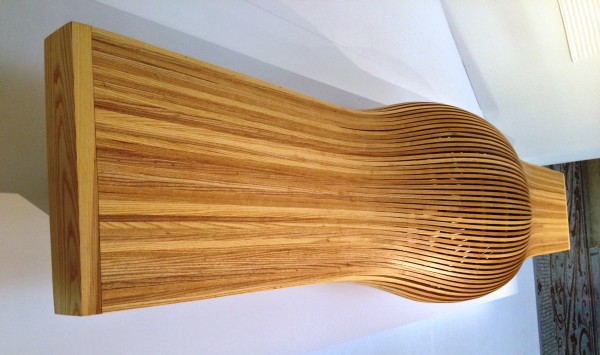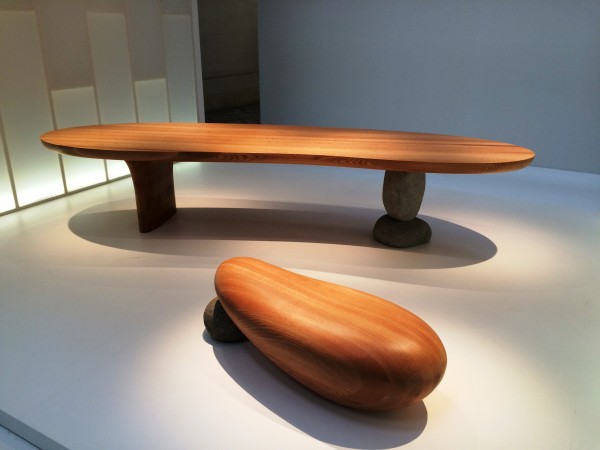Represented with more than four hundred works by a hundred artists will show the diversity of this countr y’s artistic crafts, ranging from artisans using ancient techniques to the technological innovations of the young generation. For the opening session many of the artists was present in Paris.
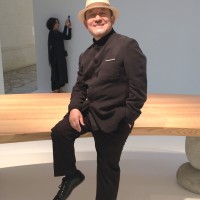
Author of the table and bench, Foto Henning Høholt
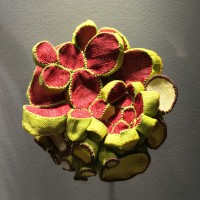
Deliciouse little flower. Foto Henning Høholt
Ottchil lacquer, Najeon mother-of-pearl inlay, hanji paper, jewellery and metalwork are featured in the first sections of the exhibition in the Rivoli galleries.
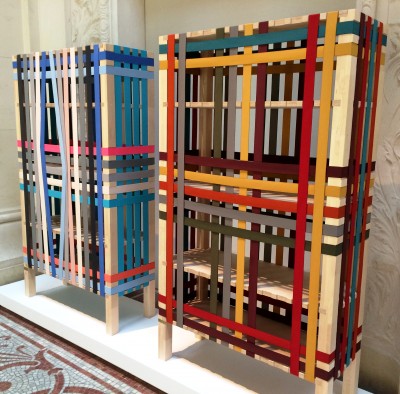
How do you do a simple racking exciting? Foto Henning Høholt
Works subject to multiple stylistic reinterpretations rub shoulders with more traditional forms, some of which are classified as “immaterial cultural heritage.
” The work of CHUNG Hae-cho, one of the incontestable masters of lacquer, is shown with the young creator LEE Kwang-ho’s alternative approach to this technique.
This innovative vision echoes the creations of LEE Young-soon and KANG Sung-hee, both specialists in the art of weaving hanji paper.
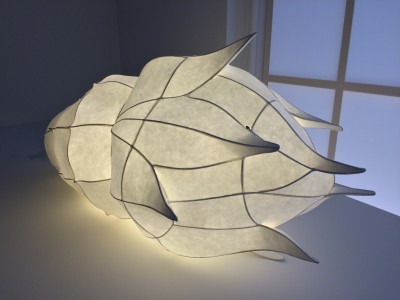
Exiting paper lamp. Foto Henning Høholt
Gold and silverware, a field in which the Koreans particularly excel, is illustrated by tableware by KIM Dong-hyun and KIM Hyeong-jun.
The last two rooms in the section will highlight Korea’s dynamic contemporary jewellery scene, featuring KWON Seul-gi and MOON Choon-sun, acclaimed for their experimental use of plastic and silicon.
Alongside them will be creations by KIM Hee-Joo, who works with natural materials such as leather, and MIN Bog-ki and SIM Hyun-seok, both faithful to more classical materials such as gold and silver.
The main focus in the nave will be on furniture, glass and porcelain. Although Korean design still has few outlets in the west, it is very present on the international scene at prestigious fairs such as Miami and Basel.
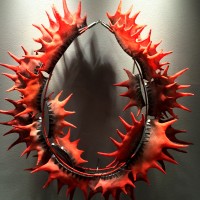
Collier. Foto Henning Høholt
This outward-looking attitude is manifest in the work of the young designers, most of whom were born in the 1980s and who blend a whole new foreign formal repertoire with their own Korean artistic tradition.
SONG Seung-yong, one of the most prolific artists of his generation, shows the impact of his training in France in works with hybrid mixtures of styles such as the Objet O chair
.
In a more traditional vein, the furniture of LEE Sam-woong and the great master of this discipline, CHOI Byung-hoon, illustrate the ancient techniques of steam bending wood still used today.
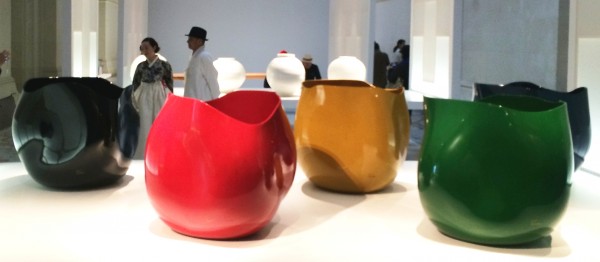
Ceramic in strong Colours, and in white (behind). Foto Henning Høholt
The spotlight moves to ceramics in the rooms on the Tuileries side.
Divided into three main themes, celadon ware, Buncheong ware and white porcelain, extremely popular and widespread Korean production methods. Celadon, developed during the Koryo dynasty (918-1392), is being reinterpreted in simple and more contemporary forms, notably in the creations of LEE Ga-jin. Potters such as REE Soo-jong are also using the Buncheong technique with great spontaneity and gestural freedom.
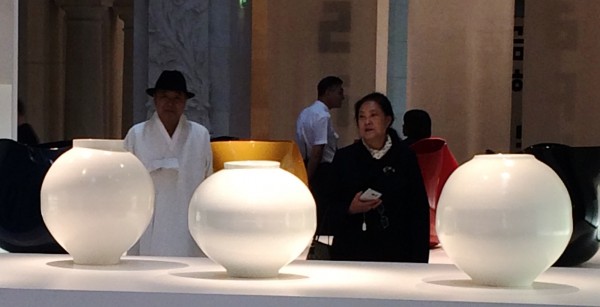
KWON Dae-sup, Classical ceramic. Foto Henning Høholt
The same is true of the white porcelain invented during the Joseon period (1392-1910), illustrated by the work of KWON Dae-sup, whose large white jars with simple, highly purified forms also illustrate this renewal
.
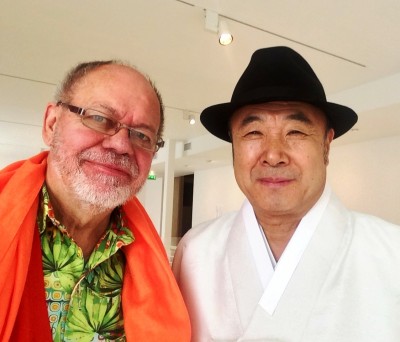
KWON Dae-sup presents classical formed, beautiful White ceramic. Here together with editor Henning Høholt
This journey of discovery ends with an evocation of a traditional Korean Hanok house, conceived as a void, with no doors and with very little furniture, to favour good measure and harmony.
The small, tray-like “soban” tables made by YANG Byung-yong illustrate daily life “at floor level.”
Bamboo work and tea ceremony services complete this vision of the traditional Korean art of living.
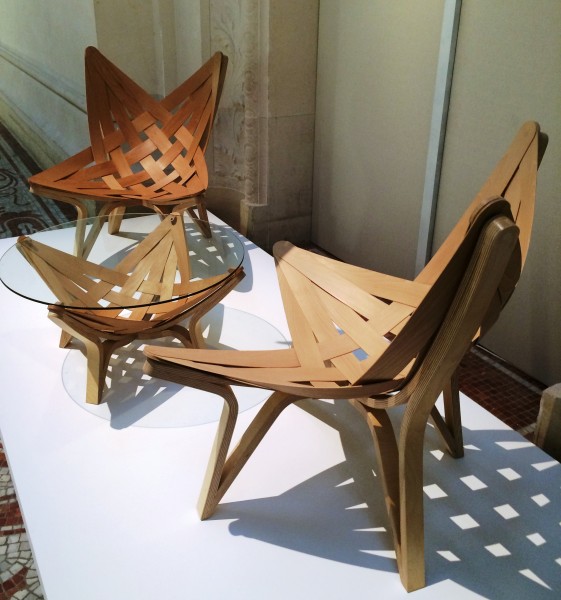
Furniture, foto Henning Høholt

